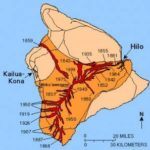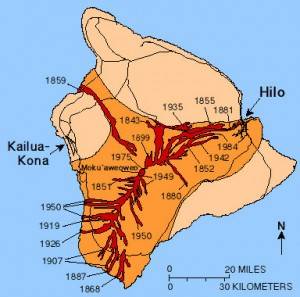Mauna Loa eruption evacuation plan in works


The Hawaii Emergency Management Agency will develop an evacuation plan for Hawaii County in the event of an eruption of Mauna Loa.
Under a state Senate resolution adopted in March, lawmakers have requested HIEMA to develop evacuation plans for areas within lava zones 1, 2, 3, 4 and 6, which encompasses most the island, save for North and South Kohala and parts of Hamakua.
“It’s just a resolution, so it’s not legally binding,” admitted Kona Sen. Dru Kanuha, who introduced the resolution. “But we’re in constant collaboration with HIEMA, and we’ll be following up with them throughout the year.”
Kanuha said he began considering the evacuation plan request after the 2018 Kilauea eruption in lower Puna, for which there was no codified evacuation plan.
“We’re continuing that conversation now,” Kanuha said. “But there is not a master plan that exists currently for this kind of disaster.”
Puna Sen. Joy San Buenaventura, who co-introduced the resolution, said state and county responses to the 2018 eruption left much to be desired.
“They were constantly making these last-minute plans as the eruption went on,” San Buenaventura said. “So, on a personal level, I see the need for a master plan, especially if (an eruption) is going to be bigger.”
In the event of an eruption, Kanuha said Hawaii County Civil Defense will conduct the evacuation efforts based on the plans set forth by HIEMA.
Kanuha said he is especially concerned about the Southwest Rift Zone of Mauna Loa — which encompasses much of South Kona and Ka‘u — where steeper slopes would lead to more rapid lava flows and “precious little time” to formulate a response on the fly.
However, Kanuha added that historical Mauna Loa eruptions have reached areas as diverse as North Kona, north of Hualalai, and Hilo, which is why HIEMA’s plan will include East Hawaii lava zones.
Kanuha said formulating the plan will take time, as HIEMA is working with county authorities as well as the Hawaiian Volcano Observatory to gather data. However, the plan will be presented to the state no later than 20 days before the beginning of the 2022 legislative session, according to the resolution.
The completed plan hopefully will then be codified into law by a bill next year, Kanuha said.
Mauna Loa last erupted in 1984. However, HVO has reported changes in seismicity on the mountain for years. Summit inflation has continued since 2014, with an uptick in earthquake activity under its west flank during the past six months.
Despite this, the U.S. Geological Survey’s Volcano Alert-Level System lists Mauna Loa under “advisory” status, the second-lowest of four activity tiers below “watch” and “warning.” Kilauea also shifted to “advisory” status last week after its latest 157-day eruption ceased Wednesday.



